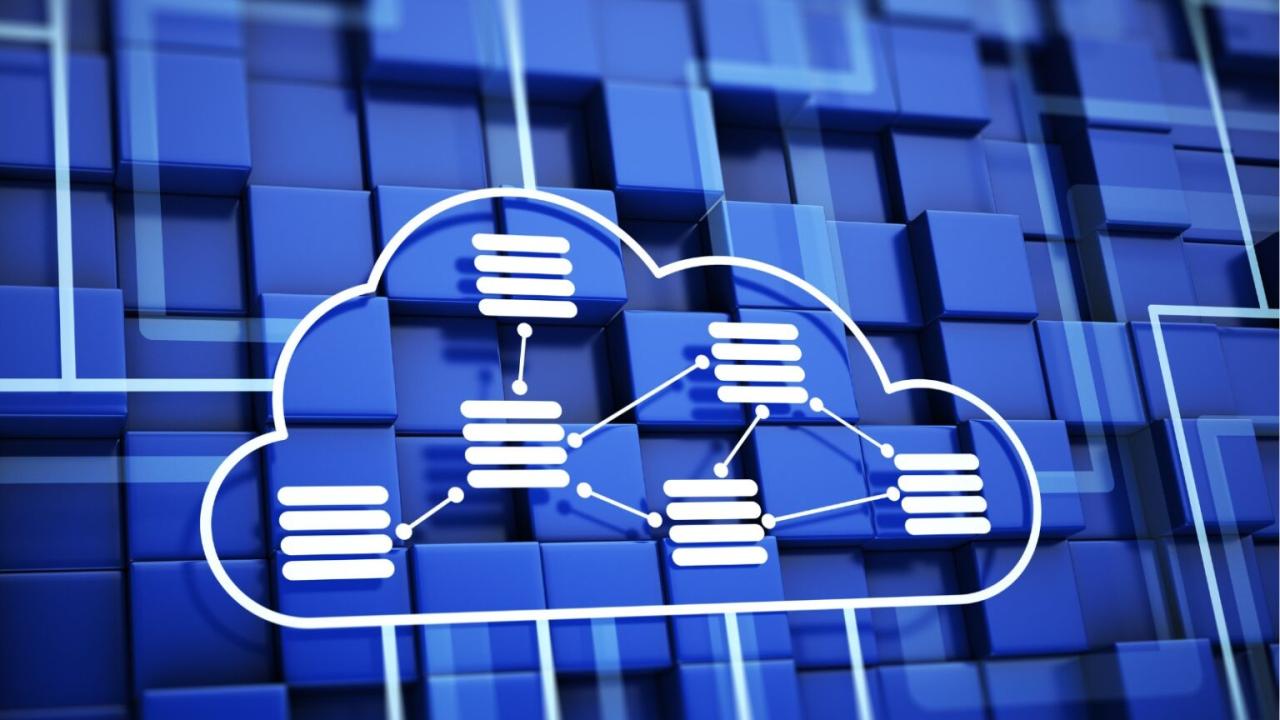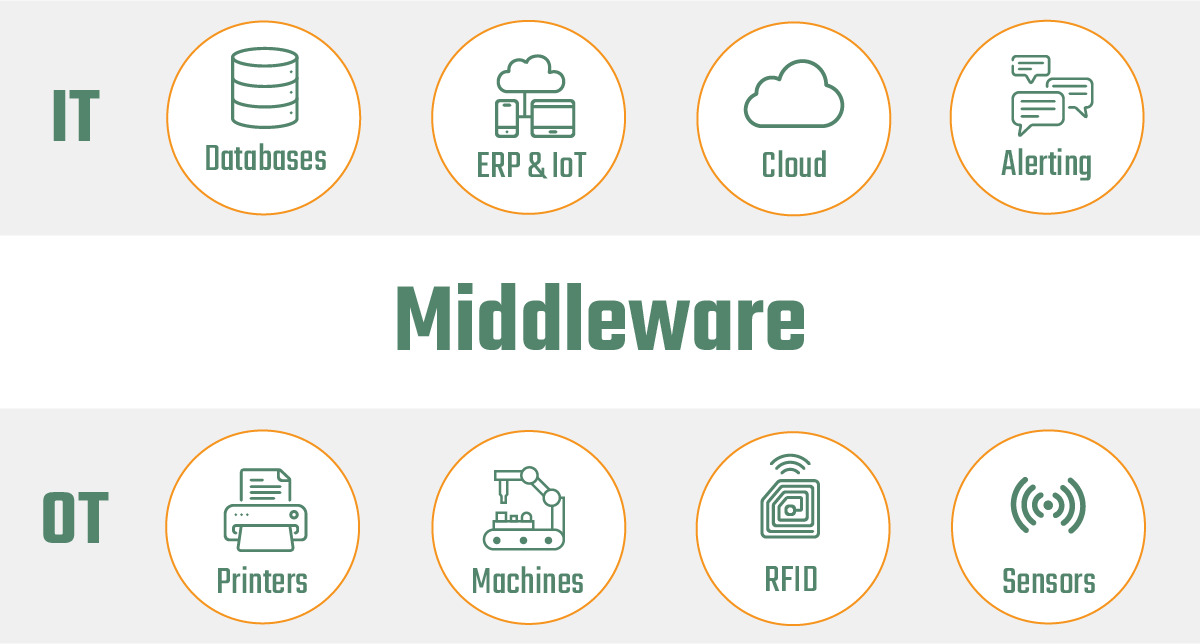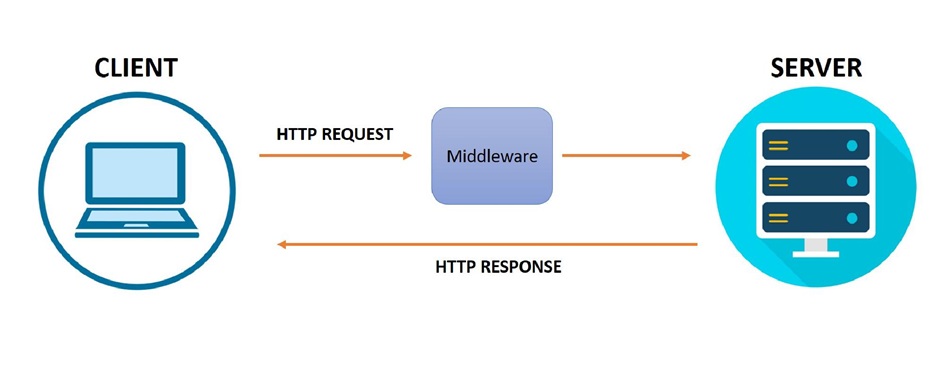In the intricate tapestry of digital interaction, middleware emerges as a silent architect, orchestrating the seamless flow of data and functionality. It acts as a bridge, connecting disparate systems and applications, enabling them to collaborate harmoniously. Imagine a symphony where various instruments, each unique in their sound, work together to create a beautiful composition; middleware is the conductor, ensuring the rhythm and harmony of this digital orchestra.
This exploration delves into the heart of middleware, examining its core functions, architectural principles, and the technologies that power its operation. We’ll traverse the landscape of middleware, from its historical context to its modern applications in cloud computing and microservices, unveiling its critical role in modern software development.
Introduction to Middleware

Middleware acts as a vital bridge between applications and underlying operating systems or hardware. It’s a software layer that handles communication, data exchange, and other functionalities to enable applications to interact seamlessly. This crucial intermediary allows diverse applications to work together, regardless of their individual programming languages or internal structures.
The core functions of middleware encompass tasks such as managing data transformations, facilitating communication protocols, and providing access to shared resources. Middleware frees applications from needing to manage these complexities, enabling developers to focus on core business logic and application features. This separation of concerns dramatically improves software development efficiency and maintainability.
Historical Context of Middleware
Middleware’s evolution mirrors the increasing complexity of software systems. Early systems relied heavily on direct interaction between applications and operating systems. As applications became more diverse and sophisticated, the need for a standardized interface and communication mechanism became apparent. The emergence of distributed systems and networked environments further highlighted the need for middleware to manage interoperability and data exchange across disparate components. This led to the development of various middleware technologies, each tailored to specific needs and functionalities.
Core Functions and Responsibilities
Middleware plays a critical role in modern software architectures by abstracting away the complexities of underlying systems. It handles tasks like:
- Data Transformation: Middleware often translates data from one format to another, enabling applications using different data structures to communicate effectively.
- Communication Management: Middleware facilitates communication between applications, often using various protocols like TCP/IP, messaging queues, or remote procedure calls.
- Resource Management: Middleware can provide access to shared resources like databases, files, or network connections, simplifying access and management for applications.
- Security Management: Middleware can implement security protocols and policies to control access and protect sensitive data exchanged between applications.
Common Use Cases
Middleware finds widespread application in various domains. Examples include:
- E-commerce Platforms: Middleware facilitates communication between different components of an e-commerce system, including order processing, payment gateways, and inventory management.
- Enterprise Resource Planning (ERP) Systems: Middleware allows different modules of an ERP system to exchange data seamlessly, supporting integrated business processes.
- Financial Transaction Processing: Middleware is essential for handling the complex transactions and data flows in financial systems, ensuring accuracy and security.
- Cloud Computing: Middleware plays a crucial role in connecting and managing different services and applications deployed on cloud platforms.
Comparison of Middleware Types
The table below highlights key characteristics of different middleware types.
| Middleware Type | Functionality | Strengths | Weaknesses |
|---|---|---|---|
| Application Server | Provides a platform for deploying and running applications, often including functionalities like transaction management, security, and load balancing. | Scalability, reliability, and standardized interfaces. Good for enterprise-level applications needing robust management. | Can be complex to configure and manage. Might not be ideal for simpler applications. |
| Message Broker | Facilitates asynchronous communication between applications using message queues. Handles message routing, storage, and delivery. | High throughput, decoupling of applications, and scalability for handling large volumes of messages. | Can introduce latency in message delivery compared to synchronous methods. Requires specialized knowledge for implementation. |
| Enterprise Service Bus (ESB) | A comprehensive middleware platform providing integration services across various applications and systems, often including transformation, routing, and security. | Provides a central point for integration, supports diverse protocols and formats, and offers advanced monitoring and management features. | Can be complex to implement and maintain. High initial investment for large deployments. |
Middleware Architecture
Middleware, acting as a bridge between applications and the underlying infrastructure, employs various architectures to achieve optimal functionality. Understanding these architectures is crucial for designing robust and scalable middleware solutions. This section delves into the key architectures, their strengths, and limitations.
Different middleware architectures cater to diverse application needs, ranging from simple interactions to complex, distributed systems. Choosing the right architecture ensures efficiency and maintainability throughout the system’s lifecycle.
Layered Architecture
Layered architectures organize middleware components into distinct layers, each responsible for specific tasks. This modular approach enhances maintainability and allows for easier updates and modifications without impacting other layers. Each layer typically interacts with the layer above and below it, following a hierarchical structure. For instance, a security layer might sit atop a communication layer.
- Advantages: Clear separation of concerns, reduced complexity, and easier maintenance are key benefits. Modifications to one layer are less likely to affect others, making the system more stable.
- Disadvantages: The strict hierarchy can sometimes limit flexibility and responsiveness. Adding new functionalities might require modifications across multiple layers, potentially increasing development time.
Event-Driven Architecture
Event-driven middleware systems respond to events triggered by various sources. These systems excel in applications where real-time processing and asynchronous communication are essential. Event-driven systems decouple components by allowing them to communicate through events. This approach is common in applications like messaging systems and real-time data processing.
- Advantages: Improved scalability and responsiveness, allowing multiple components to react to events independently. The decoupled nature promotes flexibility and easier integration with other systems.
- Disadvantages: Debugging can be more complex due to the asynchronous nature of event processing. Managing a large number of events can potentially lead to performance bottlenecks if not handled properly.
Microservices Architecture
Microservices middleware is a distributed architecture where each component functions as a separate service. This modular approach fosters independent deployment and scaling, enabling rapid development and adaptation to evolving needs. Microservices architectures are increasingly popular in large-scale applications.
- Advantages: High scalability, resilience, and flexibility. Development teams can work independently on different services, leading to faster development cycles.
- Disadvantages: Complex distributed systems can be challenging to manage and debug. Coordination between services can introduce latency and complexity.
Components of a Typical Middleware System
A typical middleware system consists of several interconnected components. These components interact to facilitate communication and data exchange between different applications. Essential components often include a communication layer, a security layer, a transaction layer, and a data transformation layer.
| Component | Description |
|---|---|
| Communication Layer | Facilitates the exchange of messages and data between applications. |
| Security Layer | Ensures secure communication and access control. |
| Transaction Layer | Manages transactions, ensuring data consistency and integrity. |
| Data Transformation Layer | Converts data from one format to another to ensure compatibility between applications. |
Diagram of a Middleware System
The following diagram illustrates a middleware system in action, showcasing the flow of data between components:
[Imagine a diagram here showing a client application sending a request to a middleware server. The middleware server interacts with different application servers based on the request type. Responses are routed back to the client application through the middleware server.]
The client application initiates a request (e.g., an order placement). The middleware server receives the request, determines the appropriate application server (e.g., inventory management, payment processing), and forwards the request. The application servers process the request and return a response. The middleware server aggregates these responses and delivers the final response to the client application. This process demonstrates the intermediary role of middleware.
Middleware Technologies

Middleware technologies are the backbone of modern application architectures, enabling seamless communication and data exchange between disparate systems. They act as intermediaries, abstracting away the complexities of interacting with various services and platforms, allowing developers to focus on building robust and scalable applications. Choosing the right middleware technology is crucial for optimizing performance, reliability, and maintainability.
Popular Middleware Technologies
Several powerful middleware technologies have emerged to address diverse application needs. These technologies offer varying capabilities, impacting their suitability for specific use cases. Understanding their strengths and weaknesses is essential for effective selection.
Apache Kafka
Apache Kafka is a distributed streaming platform that excels at handling high-volume data streams. It’s designed for real-time data ingestion, processing, and distribution. Kafka’s robust architecture ensures high throughput and low latency, making it ideal for applications requiring continuous data flow. Key features include fault tolerance, scalability, and high availability. Its widespread adoption stems from its ability to handle massive data volumes with minimal performance degradation. Kafka’s distributed architecture allows for horizontal scaling, making it suitable for applications experiencing rapid growth.
RabbitMQ
RabbitMQ is a message broker that facilitates asynchronous communication between applications. It provides a reliable message queueing system, ensuring that messages are delivered reliably and efficiently. RabbitMQ is a robust choice for applications requiring decoupling of components, enabling greater flexibility and scalability. Key features include message persistence, routing capabilities, and support for various message protocols. RabbitMQ is particularly beneficial for applications that require a reliable and robust messaging infrastructure, ensuring that messages are not lost and are delivered as intended.
Spring Boot
Spring Boot is a framework for building stand-alone, production-grade Spring-based applications. It simplifies the development process by providing a pre-configured environment, reducing the need for extensive configuration. Spring Boot is particularly effective for building microservices, enabling rapid development and deployment. Key features include embedded servers, automatic configuration, and dependency management. Its popularity stems from its ability to streamline development, making it a favorite for rapid prototyping and deployment.
Comparison and Contrast
| Technology | Use Cases | Performance Metrics | Key Features |
|---|---|---|---|
| Apache Kafka | Real-time data pipelines, log aggregation, data streaming, event sourcing | High throughput, low latency, fault tolerance | Distributed, scalable, fault-tolerant, high availability |
| RabbitMQ | Asynchronous communication, decoupling applications, reliable messaging, workflow management | Reliable delivery, guaranteed message handling, good throughput for lower volume | Message queuing, persistent messages, routing, support for various protocols |
| Spring Boot | Building microservices, web applications, API development | Fast development cycle, ease of deployment, relatively high performance for common use cases | Embedded servers, automatic configuration, dependency management |
Middleware Design Considerations

Middleware, acting as an intermediary between applications and services, demands careful design to ensure optimal performance, security, and scalability. A robust middleware solution needs to anticipate potential issues and incorporate strategies to address them proactively. This section details critical factors for middleware design, encompassing security, performance, and maintainability.
A well-designed middleware system facilitates seamless communication and integration between various components, enabling applications to focus on core functionalities without handling complex communication details. This crucial role necessitates careful attention to the intricacies of design.
Security Considerations
Security is paramount in middleware design. Middleware often handles sensitive data and acts as a gateway to critical systems. Robust security measures are essential to prevent unauthorized access, data breaches, and malicious attacks. Implement authentication and authorization mechanisms to control access to resources. Utilize encryption to protect data in transit and at rest. Regular security audits and penetration testing are critical to identify vulnerabilities and patch them proactively.
Performance Optimization Techniques
Performance is a key aspect of middleware design. A slow or inefficient middleware solution can impact the overall performance of the entire system. Several techniques can optimize middleware performance, including using caching mechanisms to store frequently accessed data, employing asynchronous processing to handle requests concurrently, and choosing efficient algorithms and data structures. Monitoring middleware performance metrics and adjusting configurations based on real-time data are crucial. Leveraging load balancing techniques can further improve performance by distributing requests across multiple middleware instances.
Scalability and Maintainability Aspects
Middleware solutions must be designed with scalability and maintainability in mind. As the system grows, the middleware needs to accommodate increasing workloads without performance degradation. Employing microservices architecture and containerization can enable horizontal scaling of middleware components. Modularity and clear separation of concerns in the middleware design facilitate easier maintenance and updates. Well-documented code and comprehensive testing procedures are crucial for maintainability. Version control systems and automated deployment pipelines can further streamline the process.
Example: Microservice Request Handling Middleware
Consider a system composed of multiple microservices. Each microservice handles a specific function, and a middleware component is needed to route requests between them. The middleware design should include the following features:
- Request Routing: The middleware intercepts requests and determines the appropriate microservice to handle them based on the request’s type and parameters. This involves a routing table or a more sophisticated routing mechanism.
- Data Transformation: The middleware might need to transform data before passing it to the target microservice, for example, converting formats or adding security headers.
- Error Handling: The middleware should gracefully handle errors encountered during request processing, providing informative error responses to the client and logging errors for troubleshooting.
- Security Checks: The middleware should perform security checks on the requests before forwarding them, verifying authentication and authorization.
- Monitoring: Implement metrics collection and reporting to track request processing time, error rates, and other performance indicators. This enables proactive identification of bottlenecks and performance issues.
This middleware design ensures efficient request handling and seamless communication between microservices.
Middleware and Modern Software Development

Middleware is no longer a niche technology; it’s a critical component powering modern applications in diverse environments. Its strategic role in connecting disparate systems and facilitating seamless communication across platforms is vital in today’s complex software landscape. This evolution aligns with the rise of microservices, cloud computing, and distributed systems, highlighting middleware’s crucial role in modern software development.
Middleware acts as a vital bridge between different software components, enabling them to communicate and cooperate effectively. This seamless integration is essential for building robust, scalable, and adaptable applications that meet the demands of contemporary software development practices. Middleware empowers development teams to concentrate on core application logic, knowing that the intricate communication details are handled efficiently and securely.
Middleware’s Role in Microservices Architectures
Microservices architectures, characterized by independent, deployable services, rely heavily on middleware to orchestrate communication and data exchange between these services. Middleware solutions facilitate service discovery, load balancing, and fault tolerance, enabling a robust and scalable microservices ecosystem. This decoupling of services, managed through middleware, is crucial for handling the complexities of modern applications and promoting agility.
Middleware in Cloud-Based Applications
Cloud-based applications leverage middleware to manage the complexities of distributed systems running across multiple cloud servers. Middleware simplifies tasks such as resource allocation, data synchronization, and security management across various cloud providers. Middleware’s abstraction of the underlying cloud infrastructure allows developers to focus on application logic rather than the intricacies of the cloud environment. Examples include cloud-based message queues (like RabbitMQ, Kafka) used for inter-service communication in microservice-based cloud applications, and load balancers that distribute incoming requests across multiple servers.
Middleware and Distributed Systems
Distributed systems, by nature, require efficient communication and coordination between components that may reside on different machines or even geographically dispersed locations. Middleware is instrumental in facilitating this communication, handling issues like data consistency, security, and fault tolerance. Robust middleware solutions enable developers to build highly scalable and reliable distributed applications, vital for applications such as e-commerce platforms and large-scale data processing systems.
Impact on Application Development Speed and Efficiency
Middleware significantly impacts application development speed and efficiency. By abstracting away the complexities of communication and data exchange, middleware allows developers to focus on the core business logic of the application. This reduced complexity leads to faster development cycles and reduced debugging time. Middleware often includes pre-built functionalities and standardized protocols that developers can utilize, reducing the need for extensive custom coding and promoting efficient development practices. This accelerates the deployment and integration of new functionalities, thereby increasing the overall efficiency of the development process. Middleware solutions often come with robust documentation and support communities, making it easier for development teams to leverage them.
Middleware Implementation
Middleware, the intermediary between applications and resources, demands careful implementation to ensure seamless functionality. Successful implementation involves a methodical approach to setup, configuration, and deployment, enabling efficient communication and resource sharing. This section details the process of setting up and configuring a middleware system, providing practical examples, and illustrating interactions in different programming languages.
Effective middleware implementation hinges on understanding the specific requirements of the system. This involves identifying the necessary components, defining the communication protocols, and configuring the middleware to interact with the applications and resources it connects. This detailed approach ensures smooth data flow and optimal resource utilization.
Setting Up and Configuring a Middleware System
The setup and configuration of a middleware system typically involves several key steps. First, the middleware software needs to be installed and configured on the target server. This involves selecting the appropriate version, installing the necessary dependencies, and configuring the middleware to interact with the target systems. Proper configuration is critical for the middleware to function as expected.
- Installation: The middleware software is downloaded and installed according to the vendor’s instructions. This process may involve compiling code, installing packages, or configuring the system environment variables. Correct installation is paramount for successful operation.
- Configuration: Configuration files, often in XML or YAML format, define the middleware’s behavior. These files specify parameters like connection details, security settings, and communication protocols. The middleware must be configured to communicate with the target systems, whether databases, APIs, or other applications. Correct configuration files are vital for optimal performance.
- Testing: Thorough testing is essential to validate the middleware’s functionality. Test cases should cover various scenarios, including successful data exchange and error handling. Testing ensures that the middleware operates as expected and addresses any potential issues.
Deploying Middleware Solutions
Deploying middleware solutions involves several stages, ensuring smooth integration and reliable operation.
- Environment Setup: The target server or cloud environment is prepared to accommodate the middleware. This involves setting up necessary infrastructure, installing required operating system packages, and ensuring sufficient resources. Proper environment setup is crucial for middleware to function effectively.
- Configuration and Deployment: The middleware is configured according to the system’s needs. This involves defining connection details, security settings, and other parameters. The middleware is then deployed to the target environment. The deployment process should be automated and well-documented for reproducibility.
- Monitoring and Maintenance: Monitoring the middleware’s performance is critical for identifying and resolving issues. Monitoring tools can track metrics such as response times, error rates, and resource utilization. Regular maintenance ensures optimal performance and addresses potential problems proactively.
Middleware Implementation Examples
This section demonstrates practical implementations of middleware in different programming languages.
Java Example
“`java
//Example of a Java middleware filter for logging requests
// … (middleware filter code) …
// Example interaction with another service
// … (interaction code) …
“`
Python Example
“`python
#Example of a Python middleware for handling authentication
# … (middleware code) …
# Example interaction with a database
# … (database interaction code) …
“`
Middleware facilitates communication and resource sharing between disparate applications, significantly enhancing software systems.
Case Studies of Middleware Applications
Middleware, the unsung hero of modern software development, empowers applications to seamlessly interact and exchange data. This section delves into real-world examples, highlighting how middleware overcomes challenges and enhances application functionality. We will explore specific middleware technologies and their impact on performance and scalability.
Middleware, acting as an intermediary layer, simplifies complex communication between diverse applications and systems. It facilitates data exchange, process orchestration, and overall application integration. By abstracting away the intricacies of communication protocols and system-specific details, middleware empowers developers to focus on core application logic, leading to faster development cycles and more robust applications.
E-commerce Platforms and Order Fulfillment
Middleware plays a crucial role in managing the intricate flow of orders in e-commerce platforms. Integrating various systems like inventory management, payment processing, and shipping services necessitates a robust middleware solution. Middleware facilitates seamless data exchange between these systems, ensuring accurate order tracking, efficient inventory updates, and timely payments.
Financial Transaction Processing
Financial institutions rely heavily on middleware for secure and reliable transaction processing. Middleware solutions facilitate communication between different financial systems, ensuring that transactions are processed accurately and securely. For example, middleware can handle complex financial calculations, verifying user credentials, and routing transactions through different payment gateways. These applications often use message queues for asynchronous processing, allowing for high throughput and fault tolerance.
Enterprise Resource Planning (ERP) Systems
ERP systems often integrate diverse business functions, including accounting, human resources, and supply chain management. Middleware enables the seamless exchange of data between these different modules. Middleware acts as a bridge, translating data formats and ensuring consistent data flow throughout the entire system. This ensures data integrity and avoids inconsistencies across different departments. Specific middleware technologies like Enterprise Service Bus (ESB) architectures are often used for this purpose.
Healthcare Systems and Patient Records
In healthcare, middleware facilitates secure data exchange between various departments and systems. The integration of patient records, lab results, and treatment plans often relies on middleware to maintain data integrity and security. Middleware allows healthcare professionals to access patient information from different sources, promoting collaboration and improved patient care. Secure communication protocols are paramount in this application domain.
Social Media Platforms and User Interactions
Middleware facilitates communication between different social media platforms and applications. It handles user authentication, data synchronization, and user interactions. For example, middleware allows users to share content across different platforms, providing a seamless experience. Middleware technologies often include message brokers and queuing systems, handling the high volume of data and user interactions.
Conclusion
These case studies demonstrate the significant impact of middleware on modern applications. Middleware empowers applications to operate efficiently, securely, and seamlessly across diverse systems, facilitating enhanced functionality and improved performance. By integrating various systems, middleware promotes interoperability, data integrity, and scalability.
End of Discussion

In conclusion, middleware stands as a crucial component in contemporary software architecture, enabling seamless communication and collaboration between diverse applications. Its versatile nature and adaptability allow it to bridge the gap between disparate systems, fostering efficient and effective data exchange. As technology continues to evolve, middleware will undoubtedly remain a cornerstone of modern software development.





